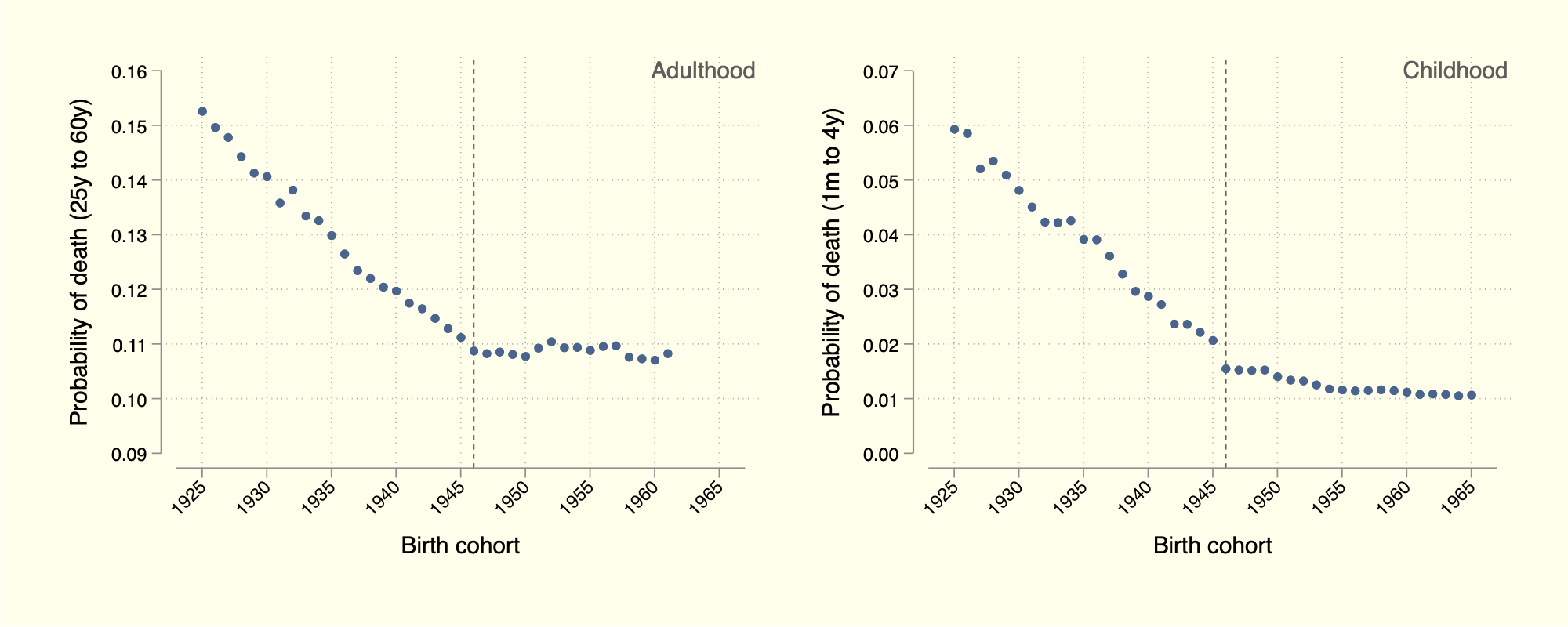Above: We present adulthood and childhood mortality rates side-by-side for cohorts born in the middle of the 20th Century. The dashed vertical lines reveal that the cohorts driving the stagnation in midlife mortality today drove a similar stagnation in early-life mortality decades earlier, inviting the possibility that current ails reflect “scars” from childhood.
Link to working paper
Abstract
This paper offers a new explanation for the alarming trend in midlife mortality observed in the United States since 2000, when death rates among working-age Americans stalled after decades of unprecedented progress. The explanation hinges on a striking parallel with a pattern that emerged just before 1950, in which death rates among children also stalled, ending a period of similarly historic gains. We will show that sustained reductions in both midlife and early-life mortality rates ceased abruptly with the same birth cohort. The implication, backed by empirical and theoretical literature connecting adulthood health to childhood circumstances, is that the recent stagnation may not be a new phenomenon, but the second manifestation of an older one. Supporting this hypothesis, we will find similar trends in midlife mortality in, and only in, peer countries where there was also a stagnation in early-life mortality decades prior, namely in other Anglo countries. We will also demonstrate that the slowdown in childhood has the capacity to be, not just a cause, but the primary cause of the slowdown in adulthood.

